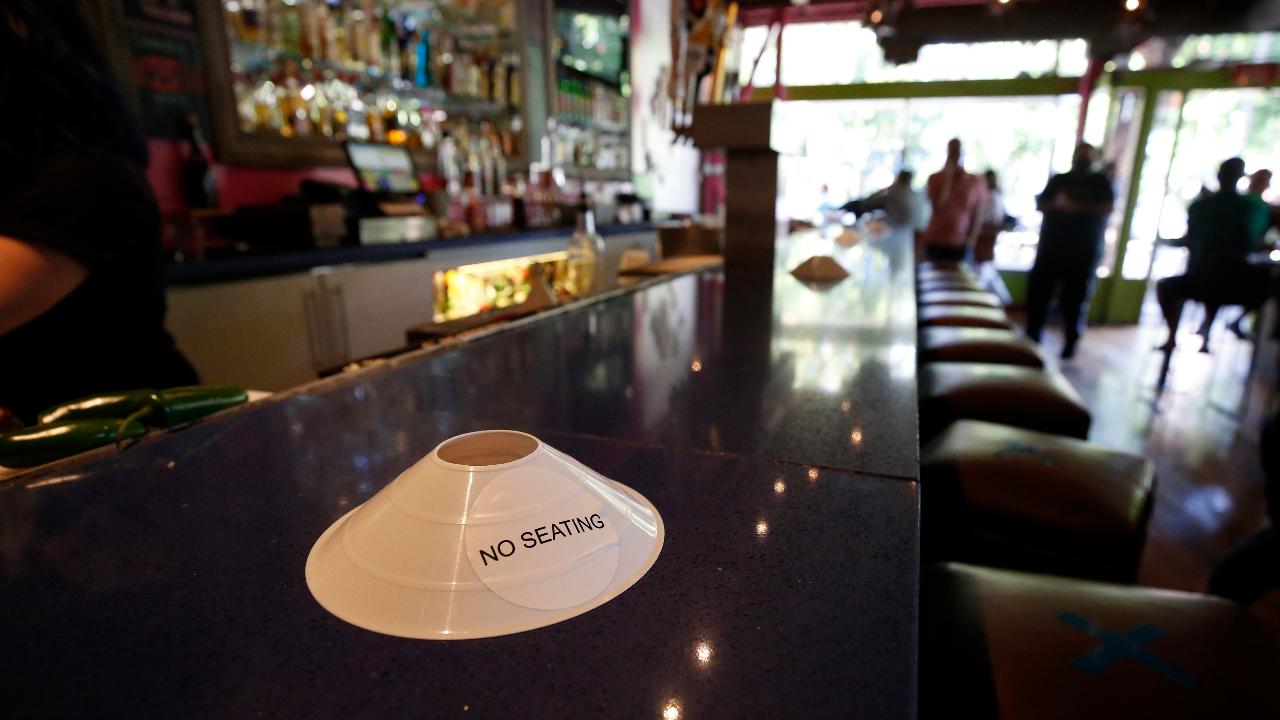Lending, spending and rates: What to watch at Powell's hearing
Powell has offered a sober assessment of the potential long-run damage the U.S. economy faces from the virus outbreak
Federal Reserve Chairman Jerome Powell returns to Congress on Tuesday morning to testify after a four-month interval in which the central bank has redefined its role in supporting the U.S. economy.
Since Mr. Powell last offered his semiannual testimony in February, the unemployment rate has climbed from 50-year lows to its highest levels recorded in more than 80 years--the result of the coronavirus pandemic.
The central bank's asset portfolio, at $7.2 trillion, is nearly double its size one year ago. And Fed officials, who cut interest rates in March to near zero, have projected that rates will remain that low for years.
FED'S POWELL SAYS US ECONOMY MAY NEED MORE POLICY HELP TO AVOID 'PROLONGED' RECESSION
Here's a look at five things to watch during two days of testimony that begin at 10 a.m. ET on Tuesday before the Senate Banking Committee:
The Economic Outlook
Mr. Powell last week offered a sober assessment of the potential long-run damage the U.S. economy faces following sharp layoffs for service-sector industries that employ millions of Americans and require increased human contact.
While some commentators said last week that the Fed's economic projections, released after their latest policy meeting, were especially pessimistic, they actually were slightly more optimistic than those from other professional forecasters. Most Fed officials see the unemployment rate falling to around 9% or 10% later this year from a high of 14.7% in April.
FED EXPECTS INTEREST RATES TO REMAIN NEAR ZERO THROUGH 2022, GDP TO REBOUND BY 5% NEXT YEAR
Those projections, and Mr. Powell's remarks last week, suggest the central bank sees the economy facing a deep recessionary environment even after more swaths of the economy open later this year.
Fiscal Policy
Mr. Powell's views on the economic outlook could shape congressional debates on providing additional financial assistance this summer.

FILE - In this Tuesday, March 3, 2020 file photo, Federal Reserve Chair Jerome Powell pauses during a news conference to discuss an announcement from the Federal Open Market Committee, in Washington. Federal Reserve Chair Jerome Powell expressed opti
Congress faces a series of deadlines. Millions of jobless Americans will see more generous unemployment benefits disappear at the end of July unless Congress extends them. Deferred tax payments are due July 15. And many state and local governments must complete annual budgets by June 30 and may be counting on more federal aid to close gaping deficits that are forcing them to cut spending and lay off workers.
POWELL WARNS 'SIGNIFICANT' NUMBER OF AMERICANS COULD REMAIN UNEMPLOYED AFTER VIRUS RECOVERY
Mr. Powell has repeatedly said the economy will likely need more support despite $3 trillion in spending and other aid approved by lawmakers since the pandemic hit in March. However, he has avoided being too specific in telling elected officials how to do their jobs.
Monetary Policy
With interest rates unlikely to go lower, a major element of Fed officials' evolving policy stance will center on how to communicate their long-run intentions, using what is known as forward guidance.
Mr. Powell said last week officials discussed at their policy meeting whether to tie their rate plans to certain economic outcomes, such as inflation returning to 2% and unemployment returning to its recent low levels. Alternate approaches would tie rate changes to specific dates and potentially cap yields on certain Treasury securities by purchasing them as needed to reinforce their rate guidance.
A MONTH INTO REOPENING, NO CLEAR TURN FOR US ECONOMY OR PANDEMIC
Investors will listen closely for clues about which approaches Mr. Powell and the rate-setting committee might prefer, as well as how it sees the prospect for an open-ended bond-buying program focused on pushing down long-term Treasury yields. The Fed has been shifting its focus from stabilizing dysfunctional markets toward providing additional stimulus to spur a stronger recovery.
Lending Programs
The Fed said Monday that it was studying how to expand its $600 billion lending program for small and midsize businesses, called the Main Street Lending Program, to include nonprofit organizations.
The central bank also outlined how it will purchase outstanding corporate bonds in a $250 billion program. Both of those programs are using money Congress appropriated to the Treasury Department to cover losses the Fed might take on those loans.
FED'S MAIN STREET LENDING FACILITY IS OFFICIALLY OPEN FOR BUSINESS
Mr. Powell could face questions about those programs and the central bank's effort to lend money to cities, states and other municipalities. Some critics of that effort have said the rates on the municipal lending program are too stingy when compared with those for corporate borrowers.
Regulatory Policy
Mr. Powell may also face inquiries about how the central bank is approaching bank regulation, given the stresses emanating from the coronavirus pandemic. The Fed is conducting tests this month, under a new set of capital rules, with additional stresses built in.
Some former Fed officials have called on the largest banks to reduce or suspend dividends as a defensive move. In April, Mr. Powell said banks were well capitalized and that there was no need to suspend such payouts to shareholders.
